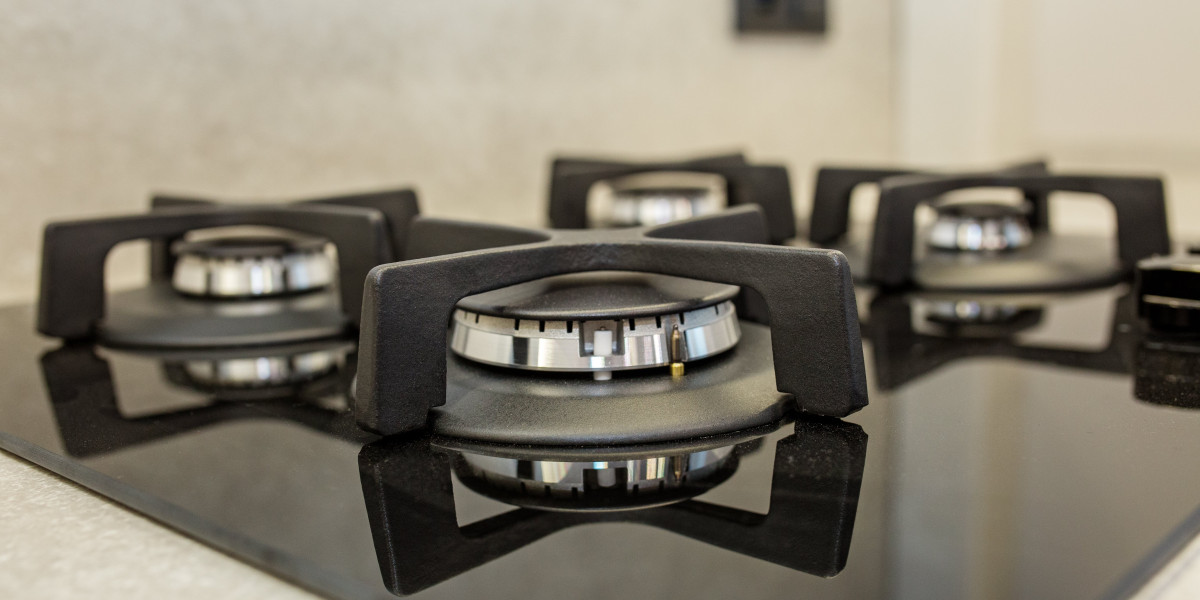Keeping the Purrfect Passage Open: A Guide to Cat Door Maintenance
Cat doors, likewise called pet doors or energy-efficient cat flap installation flaps, are a wonderful addition to any home with feline companions. They provide cats the flexibility to check out the outdoors (or designated locations within the house) and alleviate themselves, all while offering owners assurance and minimizing the number of impromptu door-opening requests. However, like any other feature of a home, cat doors are not unsusceptible to wear and tear. Regular maintenance is necessary to ensure they continue to function correctly, stay secure, and offer a comfortable and safe passage for your beloved cat. Ignoring maintenance can cause a host of issues, varying from a stiff and loud flap to a complete breakdown, possibly locking your cat out or, even worse, jeopardizing your home's security.

This short article will delve into the importance of cat door maintenance, laying out the needed actions to keep your pet's access point in prime condition. By understanding the easy maintenance required, you can extend the life expectancy of your cat door, guarantee your cat's continued flexibility, and prevent pricey repair work or replacements down the line.
Why Regular Cat Door Maintenance Matters
Keeping your cat flap consultancy door is more than just a cosmetic task; it's an investment in the performance, security, and longevity of the feature, in addition to the comfort and well-being of your cat. Here are some crucial factors why routine maintenance is crucial:
- Ensures Smooth Operation: Dust, particles, and weather condition components can accumulate around the hinges and flap of a cat door, triggering it to end up being stiff, sticky, or loud when opening and closing. Regular cleansing and lubrication avoid these problems, guaranteeing the door operates smoothly and calmly, encouraging your cat to use it without doubt.
- Extends the Lifespan of the Door: Like any mechanical component, cat doors go through wear and tear. Ignoring maintenance can accelerate this process, causing early damage and the need for replacement. Routine cleansing, lubrication, and dealing with small problems immediately can significantly extend the lifespan of your cat door, conserving you money in the long run.
- Maintains Security: An effectively operating cat door must close safely after your cat goes through. Damaged or incorrectly maintained doors may not close completely, potentially compromising your home's security by leaving spaces that could be made use of by trespassers or permit drafts and bugs to enter. For electronic or microchip-operated doors, constant maintenance makes sure the locking mechanisms and sensing units work reliably, preserving controlled access.
- Avoids Drafts and Energy Loss: A poorly maintained cat door can become a substantial source of drafts, particularly in chillier climates. Spaces around the flap or frame due to damage or debris can let cold air in and warm air out, increasing your energy expenses. Appropriate sealing and weather condition removing maintenance is important to preserve energy effectiveness.
- Promotes Hygiene: Cat doors are exposed to the aspects and can collect dirt, mud, and even insect infestations over time. Regular cleansing assists keep a hygienic passage for your cat and avoids the transfer of dirt and bacteria into your home.
- Decreases Noise: An ignored cat door can become loud, especially in windy conditions. Squeaking hinges or a rattling flap can be disruptive to both you and your cat. Lubrication and tightening of loose elements can considerably minimize sound levels.
- Early Detection of Problems: Routine maintenance allows you to check your cat door closely and determine any prospective concerns early on, such as cracks, loose screws, or malfunctioning elements. Attending to these minor problems without delay can prevent them from escalating into more significant and costly repair work.
Kinds Of Cat Doors and Maintenance Considerations
While the essential maintenance concepts use across a lot of cat doors, various types may have particular requirements. Here's a brief summary of typical cat door types and maintenance factors to consider:
- Basic Flap Doors: These are the most basic and most common type. Maintenance mainly involves cleaning the flap and frame, lubing hinges, and inspecting for damage to the flap material (plastic, rubber, or flexible polymer).
- Magnetic Cat Doors: These doors utilize a magnetic collar key to allow entry only to cats wearing the key. Maintenance includes the exact same jobs as basic flap doors, plus making sure the magnetic system is tidy and totally free of particles. Also, inspect the collar key's magnet is still functional.
- Microchip Cat Doors: These doors utilize a microchip scanner to acknowledge your cat's implanted microchip, providing selective entry. Maintenance consists of cleaning, looking for damage, and occasionally replacing batteries if it is battery-powered. The scanner lens ought to be kept tidy for reputable chip detection.
- Electronic cat flap engineer Doors: These doors might use infrared or radio frequency (RFID) technology for selective entry, typically with sophisticated features like curfew settings. Maintenance involves cleansing, examining for damage, battery replacement (if suitable), and occasionally recalibrating or reprogramming the electronic elements according to the producer's guidelines.
Vital Cat Door Maintenance Tasks: A Step-by-Step Guide
Developing a routine maintenance schedule will keep your cat door working efficiently. Here's a breakdown of typical maintenance tasks:
1. Regular Cleaning (Weekly/Bi-weekly):
- Gather Supplies: You will require:
- Mild soap or detergent
- Warm water
- Soft cloth or sponge
- Paper towels or a clean, dry cloth
- (Optional) Disinfectant wipes (pet-safe)
- Wipe Down the Flap: Use a damp fabric or sponge with soapy water to clean up both sides of the flap. Eliminate any dirt, mud, fur, or insect residue.
- Tidy the Frame: Clean the entire frame of the cat door, both within and out. Pay attention to corners and crevices where dirt can build up.
- Dry Thoroughly: Ensure all parts are entirely dry to prevent mildew or rust.
- Decontaminate (Optional): If wanted, use pet-safe disinfectant wipes to sterilize the door and frame, particularly if you have multiple cats or desire to preserve additional health.
2. Lubrication (Monthly/As Needed):
- Identify Hinges and Moving Parts: Locate the hinges, rotates, or any other moving parts of the cat door mechanism.
- Apply Lubricant: Use a silicone-based lubricant spray or a dry lubricant (like graphite powder) specifically created for hinges and moving parts. Prevent oil-based lubricants, as they can attract dust and become sticky over time. Apply sparingly to prevent drips.
- Work the Door: Open and close the cat door flap several times to distribute the lubricant evenly and ensure smooth, peaceful operation. Wipe away any excess lubricant.
3. Evaluation and Repair (Monthly/Seasonally):
- Check for Damage: Carefully inspect the flap for cracks, tears, or warping. Try to find damage to the frame, weather condition stripping, or any locking systems.
- Tighten Up Loose Screws: Check all screws protecting the door frame to the door or wall and tighten any that are loose. Loose screws can result in instability and drafts.
- Check Weather Stripping: Examine the weather condition stripping around the flap and frame for damage, cracks, or spaces. Replace damaged weather removing to maintain a good seal and prevent drafts.
- Battery Check (Electronic/Microchip Doors): If your door is battery-operated, inspect the battery level routinely and change batteries according to the manufacturer's suggestions. Low batteries can trigger malfunctions and unreliable operation.
- Sensing Unit Cleaning (Microchip/Electronic Doors): Gently tidy the sensor lens with a soft, dry cloth to guarantee accurate chip or crucial detection.
4. Seasonal Maintenance:
- Winter:
- Check for ice buildup around the flap and frame. Carefully remove ice to avoid damage and ensure smooth operation.
- Guarantee weather condition removing remains in excellent condition to avoid drafts and cold air entry.
- Summer:
- Check for insect nests or invasions around the cat door. Clean away any nests and think about using pet-safe bug spray around the door frame.
- Ensure proper ventilation around the door opening to avoid humidity buildup and prospective mildew development.
Tools and Supplies for Cat Door Maintenance
Keeping a little package of maintenance tools and supplies useful will make routine upkeep easier and more effective. Consider assembling the following:
- Soft cloths and sponges
- Moderate soap or cleaning agent
- Silicone lube spray or dry lubricant
- Screwdriver (Phillips and flathead)
- Pet-safe disinfectant wipes (optional)
- Replacement weather removing (if required)
- Small brush for cleaning up crevices
- Paper towels
- Replacement batteries (if suitable)
DIY vs. Professional Help
A lot of routine cat door maintenance tasks are uncomplicated and can be easily dealt with by property owners. Nevertheless, there are circumstances where looking for professional help may be advisable:
- Significant Damage: If you find extensive damage to the door frame, flap, or locking systems, professional repair or replacement may be needed.
- Electronic Malfunctions: Troubleshooting electronic or microchip door malfunctions can be intricate. If you are uncertain how to detect or repair electronic concerns, consult a professional installer or a certified technician.
- Installation Issues: If you are experiencing consistent problems after installing a new cat door, it might be due to installation errors. A professional installer can examine the circumstance and rectify any problems.
Routine cat door maintenance is an easy yet crucial aspect of accountable pet ownership for those who choose to offer their feline buddies with this flexibility. By committing a percentage of time to cleansing, lubricating, and examining your cat door, you can ensure its ongoing smooth operation, longevity, security, and hygiene. A properly maintained cat door offers your cat with constant access to the outside world (or designated indoor locations), contributing to their joy and wellness, while likewise supplying assurance for you. Taking proactive actions to look after your cat door will keep the purrfect passage open for years to come.
FAQs about Cat Door Maintenance
Q: How often should I clean my modern cat flap installation door?
A: Aim to clean your cat door weekly or bi-weekly for standard flap doors. For electronic or microchip doors that might accumulate more dirt around the sensor areas, weekly cleaning is recommended.
Q: What kind of lube should I utilize on my cat door hinges?
A: Silicone-based lube spray or dry lubricant (like graphite powder) is suggested. Avoid oil-based lubes as they can bring in dust and end up being sticky.
Q: How do I clean up a microchip skilled cat flap installer door sensing unit?
A: Use a soft, dry cloth to carefully wipe the sensor lens. Prevent using liquids or abrasive cleaners, as they could damage the sensor.
Q: My cat door flap is sticking. What should I do?
A: First, tidy the flap and frame completely. Then, apply a small amount of lubricant to the hinges and moving parts. If the sticking continues, look for any damage to the flap or frame and think about tightening up screws or adjusting the door positioning.
Q: How do I know when to change the batteries in my electronic cat door?
A: Electronic cat doors normally have a low battery indicator light or caution signal. Describe your door's handbook for specific instructions on battery replacement. It's an excellent practice to change batteries proactively, perhaps every 6-12 months depending upon use and battery type.
Q: Can I utilize home cleaners to clean my cat door?
A: Yes, you can utilize mild soap or cleaning agent diluted in warm water. Avoid harsh chemicals or abrasive cleaners that might harm the door material. Guarantee any cleansing products are pet-safe.

Q: My cat door is allowing drafts. How can I fix this?
A: Inspect the weather stripping around the flap and frame. Change any broken or worn weather condition stripping. Make sure the door frame is securely set up and tighten any loose screws. You can also consider including extra weather removing or a draft excluder specifically designed for pet doors.








